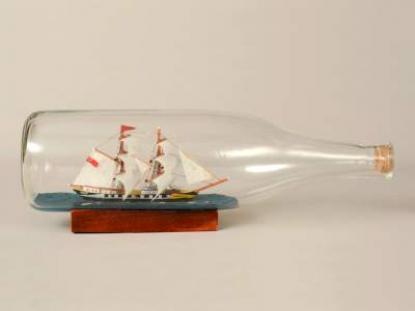2024. May 6. Monday
Museum of Ethnography - Budapest
 |
Address: 1146, Budapest Dózsa György út - Ötvenhatosok tere
Phone number: (1) 473-2400
E-mail: info@neprajz.hu
Opening hours: Tue-Sun 10-18
|
The exhibition has closed for visitors.
2015.03.05. - 2015.08.23.
Museum tickets, service costs:
|
Individual ticket for adults
|
3000 HUF
|
|
|
Individual ticket for adults
(1 hour before closing)
|
1600 HUF
|
|
|
Group ticket for adults
(min. 10 people)
|
2600 HUF
|
/ capita
|
|
Individual ticket for students
|
1500 HUF
|
|
|
Individual ticket for students
(1 hour before closing)
|
800 HUF
|
|
|
Group ticket for students
(min. 10 people)
|
1300 HUF
|
/ capita
|
|
Individual ticket for pensioners
|
1500 HUF
|
|
|
Individual ticket for pensioners
(1 hour before closing)
|
800 HUF
|
|
|
Group ticket for pensioners
(min. 10 people)
|
1300 HUF
|
/ capita
|
|
Ticket for families
(2 adults + max. 3 children (up to 18 years old))
|
6300 HUF
|
/ family
|
|
Individual combined ticket for adults
(Zoom permanent exhibition + Ceramics Space + MÉTA)
|
1700 HUF
|
|
|
Individual combined ticket for adults
(We Have Arrived temporary exhibition + Ceramics Space + MÉTA)
|
2000 HUF
|
|
|
Individual combined ticket for students
(Zoom permanent exhibition + Ceramics Space + MÉTA)
|
850 HUF
|
|
|
Individual combined ticket for students
|
1000 HUF
|
|
|
Individual combined ticket for pensioners
(Zoom permanent exhibition + Ceramics Space + MÉTA)
|
850 HUF
|
|
|
Individual combined ticket for pensioners
(We Have Arrived temporary exhibition + Ceramics Space + MÉTA)
|
1000 HUF
|
|
|
Group walk ticket
(building walk, max. 15 people)
|
1500 HUF
|
/ capita
|
|
Group walk ticket for students
(Méta gallop, 10-20 people)
|
1200 HUF
|
/ capita
|
|
Group walk ticket
(building walk, in English, max. 15 people)
|
1800 HUF
|
/ capita
|
|
Group walk ticket for students
(Méta gallop, 10-20 people, in English)
|
1400 HUF
|
/ capita
|
|
Group guide
(10-20 people)
|
1000 HUF
|
/ capita
|
|
Group guide
(thematic, whit the curator of the exhibition, 5-20 people)
|
1300 HUF
|
/ capita
|
|
Group guide for students
(min. 10 people)
|
800 HUF
|
/ capita
|
|
Group guide
(10-20 people, in English)
|
1300 HUF
|
/ capita
|
|
Group guide
(thematic, whit the curator of the exhibition, in English, 5-20 people)
|
1690 HUF
|
/ capita
|
|
Group guide for students
(in English, 10-20 people)
|
1000 HUF
|
/ capita
|
|
Audio guide
|
1000 HUF
|
|
|
Photography
(for camera, camera-stand and telephoto lens)
|
700 HUF
|
Traditionally, the new temporary exhibition presenting the most important acquisitions of the former year opens on 5 March at the Ethnography Museum Day. The Ethnographic Museum collection acquired over 2164 items and photos in 2013-2014-, the exhibition selects of these.

During this period, a deliberate selection for the collection characterised work at the collection. By the support of NKA, they managed to purchase the special patience bottle collection and the unique Australian collection that invites the visitors to have insight into the world of a closed community. The Folk Heritage Foundation came to the help the museum in purchasing an important heritage of the Ormánság and also the Bálint Sárosi collection of musical instruments. Also, the collection is enriched by the folk musical instruments and music related notes of István.
Mordvinian objects were acquired by the museum as a result of field work as well as special Vietnamese ceramics. The year 2013 resulted in the Malonyay heritage being moved from the Moholy Nagy University of Art. The Ethnological Archive acquired, among others, a First World War postcard collection, as well as a multi-thousand-piece slide collection. The new acquisitions reveal a very diverse picture, both time and geographically.
Visitors can learn about traditional and modern, domestic, European and non-European artefacts, many of them with adventurous journey behind them, sometimes from the perspective of the artefact now located at the museum.

During this period, a deliberate selection for the collection characterised work at the collection. By the support of NKA, they managed to purchase the special patience bottle collection and the unique Australian collection that invites the visitors to have insight into the world of a closed community. The Folk Heritage Foundation came to the help the museum in purchasing an important heritage of the Ormánság and also the Bálint Sárosi collection of musical instruments. Also, the collection is enriched by the folk musical instruments and music related notes of István.
Mordvinian objects were acquired by the museum as a result of field work as well as special Vietnamese ceramics. The year 2013 resulted in the Malonyay heritage being moved from the Moholy Nagy University of Art. The Ethnological Archive acquired, among others, a First World War postcard collection, as well as a multi-thousand-piece slide collection. The new acquisitions reveal a very diverse picture, both time and geographically.
Visitors can learn about traditional and modern, domestic, European and non-European artefacts, many of them with adventurous journey behind them, sometimes from the perspective of the artefact now located at the museum.
